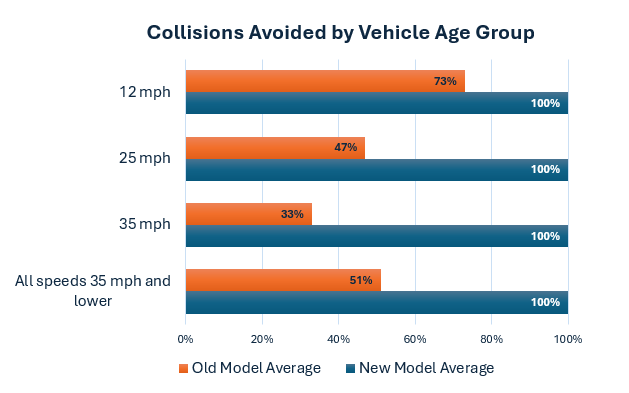BOISE – At one time, it seemed like something out of a science fiction movie – a vehicle that uses automatic emergency braking (AEB) to prevent or minimize a crash. But today’s AEB technology is much more effective than just a few years ago.
In new research by AAA, three new (2024) vehicles were compared with their 2017-2018 counterparts. After a series of test runs at speeds up to 35 MPH, the older models avoided a rear-end collision with a “dummy car” half the time, while the new models avoided a crash every time.

AEB does not perform well at higher speeds. During AAA testing, three out of the four vehicles evaluated avoided a collision at 45 MPH. For those three, the test speed was increased to 55 MPH, with none of the remaining vehicles avoiding a collision.
“AEB advancements are critical to achieving the National Highway Traffic Safety Administration’s requirement that it come as standard equipment in all new vehicles by 2029,” says AAA Idaho public affairs director Matthew Conde. “Fortunately, we’re off to a great start.”
NHTSA’s new Federal Motor Vehicle Safety Standard mandates that 2029 vehicles be able to avoid a collision at 62 miles per hour and apply the brakes at 90 MPH.
“While today’s advanced vehicles are truly amazing, no car on the market today can effectively stop itself at freeway speeds,” Conde said. “With plenty of cold days and slick roads ahead, attentive drivers are more important than ever.”
Advice for drivers
- Stay alert. Advanced driver assistance systems help drivers but do not replace them.
- Avoid distractions, speeding, drowsiness and impairment – all increase the risk of a crash.
- Learn how your vehicle will perform, including its limitations.
- Do not use cruise control during bad weather.
Encouragement for vehicle manufacturers
- Continue to invest in AEB research and development, such as improved sensor packages and braking algorithms, with the goal of ensuring safety above 45 MPH.
- Offer earlier forward-collision warning (FCW) alerts to give drivers more time to react and apply the brakes before the system takes over.
“Automatic emergency braking has already made a big difference in saving lives and preventing serious injuries by reducing impact speeds,” Conde said. “The next five years of development are going to be very exciting.”
AAA methodology
AAA tested three older models and their newer counterparts on a closed-course raceway at the Automobile Club of Southern California’s Automotive Research Center. Results of the test runs were shared with automakers to increase AEB system performance in the future. The “dummy vehicle” was a DRI Soft Car 360° positioned at the end of the course.



